Recent Articles
Popular Makes
Body Types
2021 BMW X1 Road Test and Review
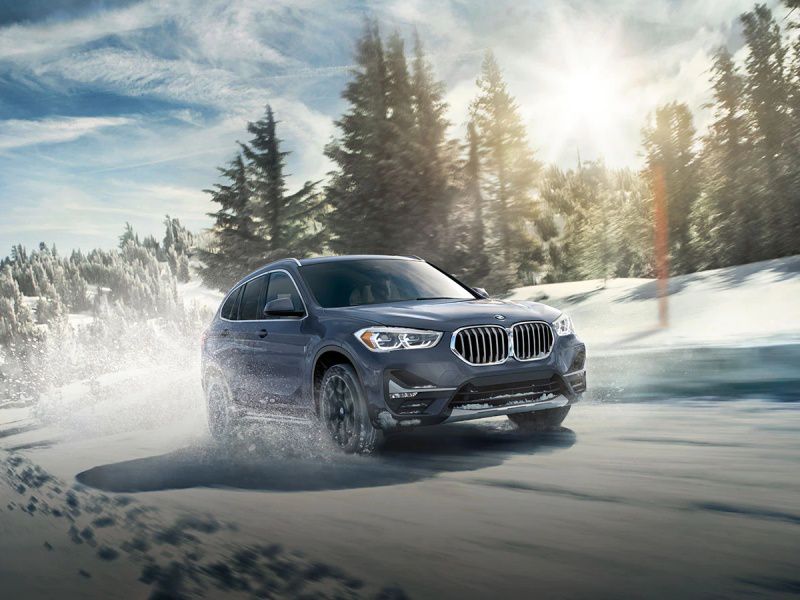
2021 BMW X1 ・ Photo by BMW
One of the fastest-growing segments in the car industry is the small luxury-crossover segment. Many buyers who, a decade ago, aspired to own a luxury convertible or coupe are now finding themselves craving an SUV. And one of the leaders in the segment is the BMW X1, a vehicle that provides all that the BMW name implies and is also amazingly useful. With a small footprint that makes it a great choice for well-off urbanites, the X1 keeps gaining sales from buyers who once thought they’d never buy an SUV. The X1 is available with front-drive or all-wheel-drive, so it is competent in any weather. And even the front-drive version handles like, well, a BMW. Its turbocharged engine gives it plenty of go-power. And with a combination of good fuel economy, an accommodating interior, and excellent driving dynamics, the BMW X1 is an excellent choice for those seeking a small luxury SUV.
Exterior Style
small suvs have a tendency to look like toys. You stare at them and say to yourself, “How useful can something that small really be?” And the answer when it comes to the X1 is, it’s pretty darn useful. The X1 has more passenger and cargo space than its shape would suggest. About the same length as the Volvo XC40 and about two inches longer than the Mercedes-Benz GLA 250, the X1 falls in the middle of its European rivals when it comes to size. One thing the X1 doesn’t hide is its BMW heritage. It looks like a smaller version of the X5 and X3 because that’s exactly what it is, though again in a front-drive-oriented platform it shares with MINI. The BMW's signature twin-kidney grille is its most prominent feature. The remainder of the X1’s exterior is handsome but unremarkable.
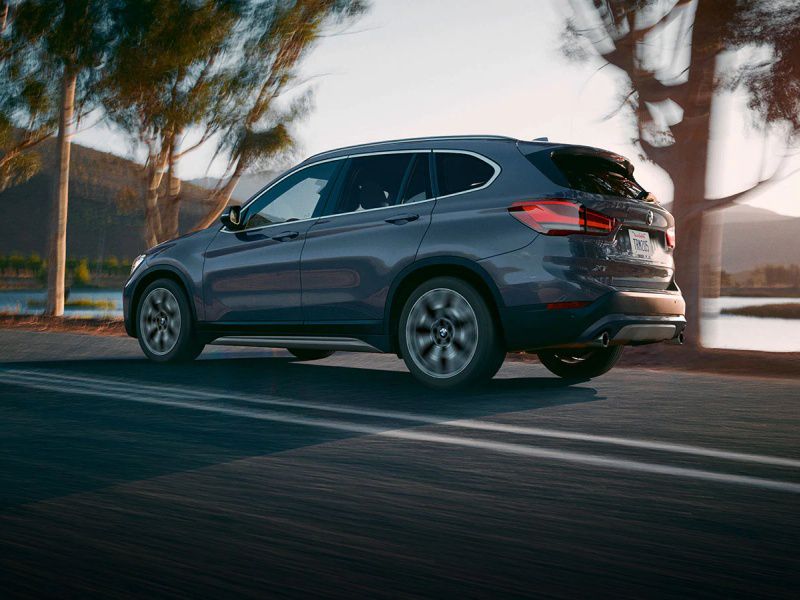
Photo by BMW
Powertrains
The 2020 BMW X1 is powered by a 2.0-liter turbocharged four-cylinder that produces 228 horsepower and 258 lb-ft of torque. The 2.0-liter engine is a workhorse used in a variety of the brand’s models, and for good reason. It provides excellent low- and mid-range torque to deliver a peppy, ready-to-accelerate vibe. An 8-speed automatic transmission contributes to its drivability. With the BMW M Sport package, the modified transmission is fitted with steering-wheel-mounted shift paddles. But even in standard form, the engine-transmission combination is a satisfying one. Though the all-wheel-drive version of the X1 is a bit slower 0-60 mph than the front-driver, it’s probably worth the tradeoff. The BMW xDrive all-wheel-drive system improves traction on compromised surfaces, and it also helps reduce understeer in turns.

Photo by BMW
Driving Impressions
Though the all-wheel-drive xDrive 28i is the far better choice between the two basic X1 trims, it doesn’t mean the small SUV has any serious off-road capabilities. It’s better to look at the xDrive system for its benefits in on-road driving, especially in poor weather conditions. Even in front-drive form, the X1 has very creditable handling, and the all-wheel-drive system just makes it a bit better. If not velvety, the 2.0-liter engine’s torque delivery is smooth, and the steering is well-weighted and reasonably communicative. It doesn’t make us wish that all BMWs were front-wheel-drive vehicles, but it gets the job done.
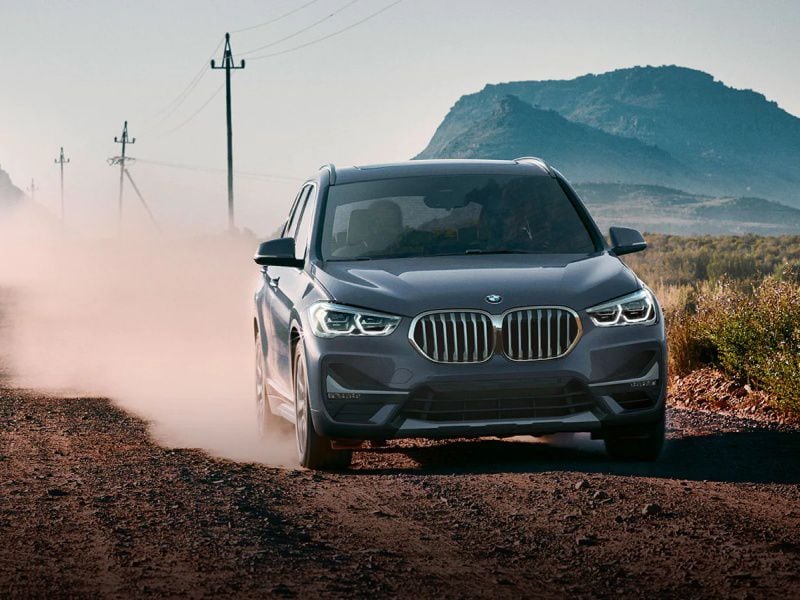
Photo by BMW
Interior Design
The X1’s interior doesn’t break any new ground, but that’s probably just fine with its buyers. It looks like the interior of a more expensive BMW SUV while doing without some of the more expensive materials used in pricier Bimmers. The major instruments are classic round dials, and they are easy to decipher. The 8.8-inch wide infotainment screen is mounted horizontally atop the dash, and it is almost equally legible. Both driver and front passenger are treated to well-designed seats that are power-adjustable eight different ways. Sliding and reclining rear seats are optional, and they increase the X1’s utility measurably. The SUV has room for four adults or five in pinch, and it can accommodate a surprising amount of cargo. It has 27.1 cubic feet of luggage space behind the second row and 58.7 cubic feet of space with the second-row seats folded.
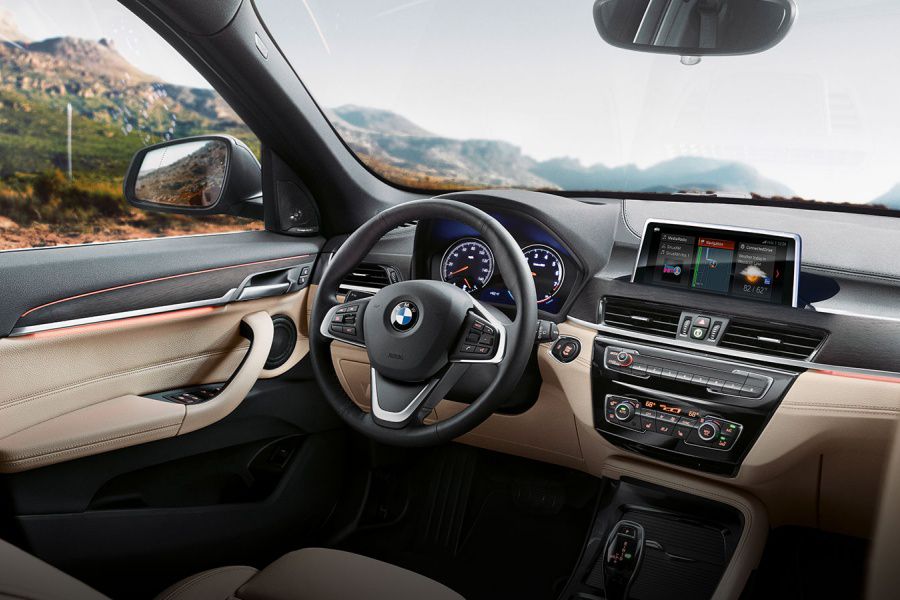
Photo by BMW
Infotainment & Technology
The X1 features a version of the famous iDrive infotainment system, one of the earliest of the full-featured infotainment systems. It features an 8.8-inch dash-top screen, and it is controlled with a rotary knob on the center console. To help you on your way, the knob is surrounded by buttons that enable you to select individual functions. It’s not as intuitive as a conventional touchscreen, but it keeps fingermarks to a minimum. It is compatible with Apple CarPlay but doesn’t support Android Auto. The standard audio system has a 205-watt digital amplifier and seven speakers, and it delivers good strong sound. A navigation function and voice recognition are standard, and both work well. Wireless device charging is on the options list, and a head-up display is part of the Premium option package.
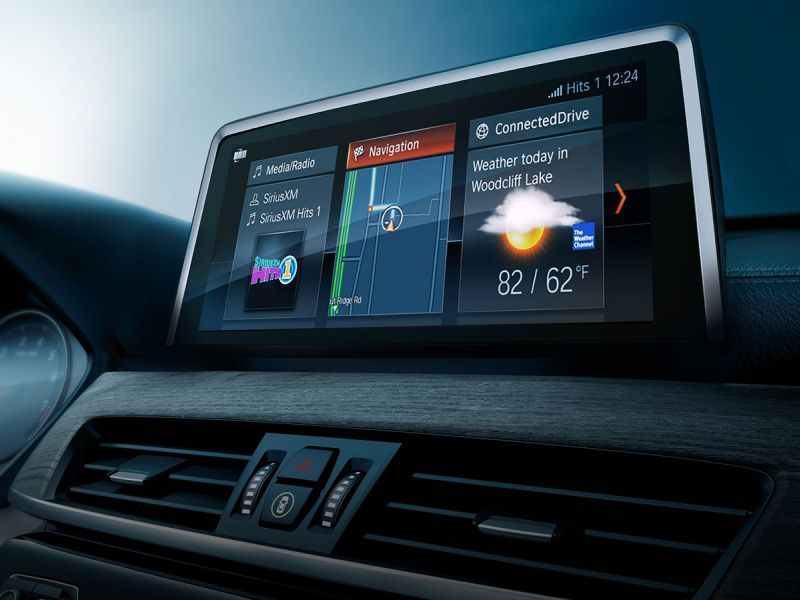
Photo by BMW
Safety & Driver Aids
SUV buyers typically seek safety. The BMW X1 offers a long list of available active safety and driver-assist features, and many of them are standard. The X1’s BMW Active Driving Assistant includes frontal collision warning, low-speed collision mitigation with automatic braking, lane departure warning, pedestrian detection with automatic braking, speed limit information, and automatic high beams. Adaptive cruise control with stop-and-go, a boon in stop-and-go traffic, is a standalone option on the X1. Real-time traffic information is standard, and it can keep drivers out of bad traffic and even dangerous driving conditions. The BMW X1 does very well in the National Highway Traffic Safety Administration 5-Star Safety Ratings, getting an overall 5-star score, the highest honor.
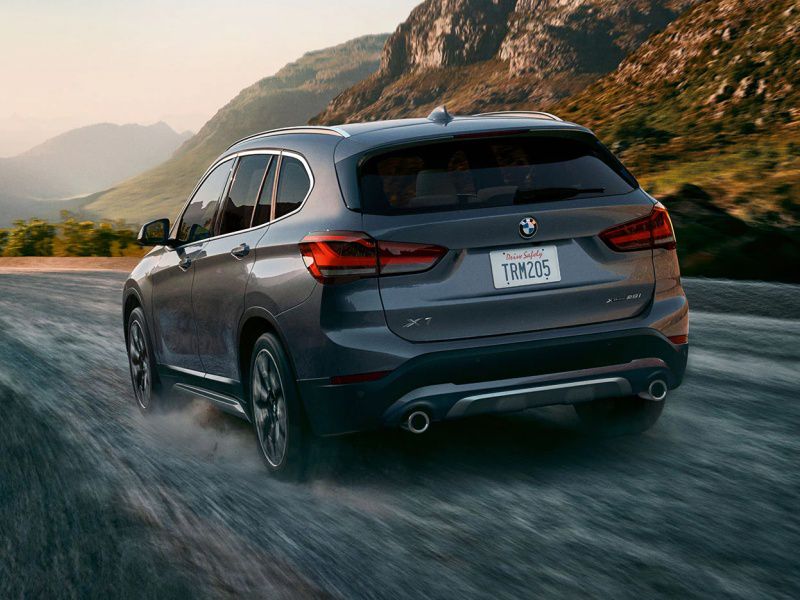
Photo by BMW
Fuel Economy
The BMW X1’s fuel economy is among the best in its segment of conventionally powered small luxury SUVs. According to the Environmental Protection Agency (EPA), an X1 sDrive 28i with the 2.0-liter turbocharged four-cylinder engine delivers an estimated 24 mpg city and 33 mpg highway. All-wheel-drive drops fuel economy by 1 mpg in city driving and 2 mpg on the highway. The Mercedes-Benz GLA 250 offers slightly better economy than the X1 — 25 mpg city and 34 mpg highway. The Audi Q3 turns in 22 mpg city and 30 mpg highway. The conventionally powered Volvo XC40 gets 23 mpg city and 32 mpg highway. The XC40 Recharge is a zero-emission battery-electric vehicle. It has a 79 MPGe rating in combined city and highway driving.
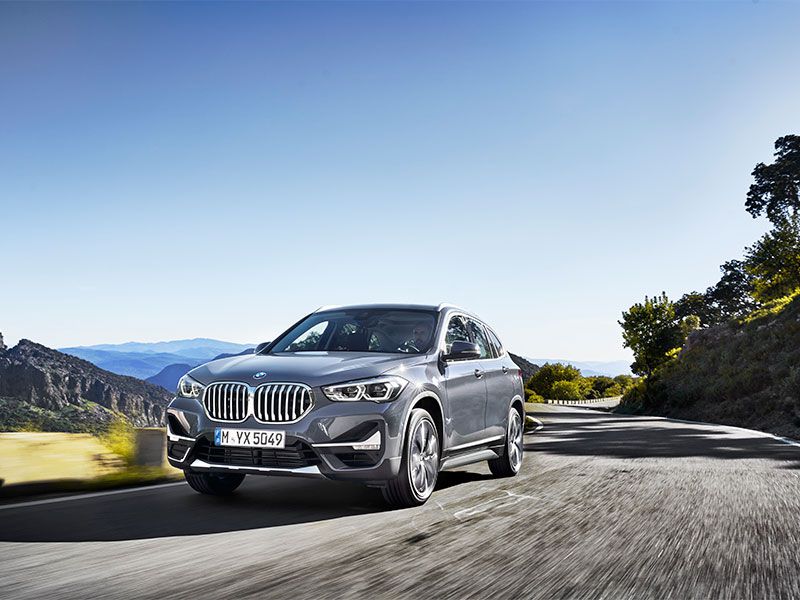
Photo by BMW
Cargo Capacity
The BMW X1 doesn’t offer the same interior passenger room and cargo space of larger SUVs, but it still delivers a great deal of utility. It is designed for five passengers, and while four might be a more comfortable number, five is doable. Even with five aboard, none of its passengers will feel claustrophobic although the middle-seat passenger in the rear might rub shoulders and elbows with both neighbors. Passengers can bring their stuff too. The X1 has more than 100 cubic feet of passenger volume, and a very accommodating 27.1 cubic feet of cargo space behind the rear seat. With the rear seatback folded, 58.7 cubic feet of cargo area opens up. The X1’s lightweight liftgate is easy to open and close, and it enables you to load bulky cargo.
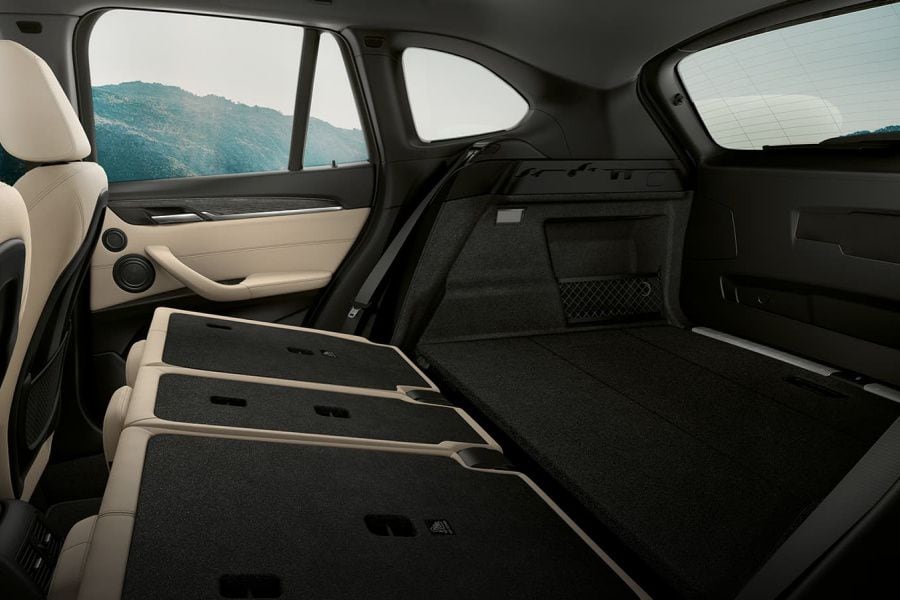
Photo by BMW
Trim Levels
The 2021 BMW X1 is available in just two trims: sDrive 28i and xDrive 28i. In some ways, it is difficult to term them separate trims because the only substantive difference between them is which wheels are doing the driving. The sDrive 28i is front-wheel drive, and the xDrive 28i is all-wheel drive. The base equipment level includes 18-inch alloy wheels, roof rails, synthetic leather seats, 8-way power-adjustable front seats, and power-operated tailgate. The X1 xDrive 28i trim adds xDrive all-wheel drive and hill descent control. Apple CarPlay compatibility is standard in an 8.8-inch touchscreen infotainment display with integrated navigation. The Premium package adds things like heated front seats and heated steering wheel. Leather seating is available in the Luxury package.
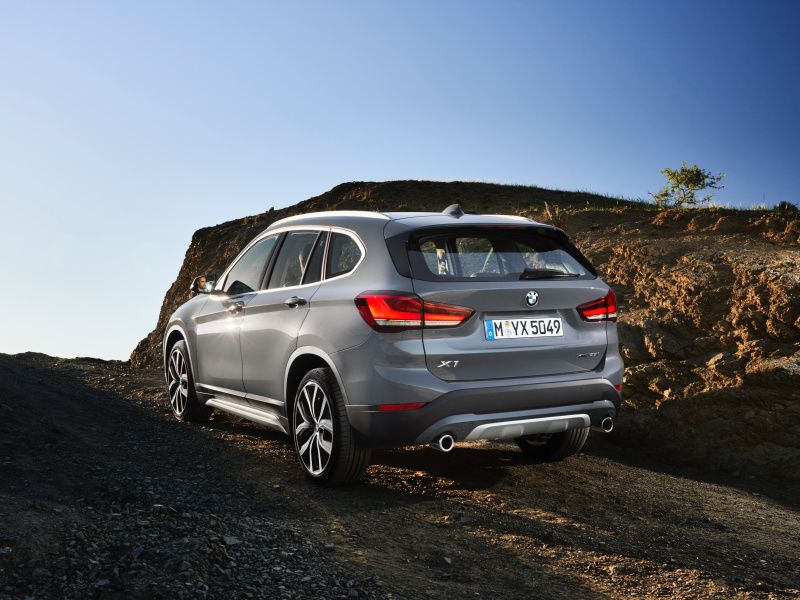
Photo by BMW
Pricing & Value
The BMW X1 offers very good value in the small luxury crossover segment. For one thing, it is a BMW through and through, and that gives it an added level of panache. With a starting price of about $37,000 including destination fee, it includes a high level of equipment and features. As we mentioned, the BMW X1 xDrive 28i has very similar comfort and convenience features. The big addition for the added $2,000 in cost is the sophisticated xDrive all-wheel-drive system and hill descent control. Depending upon your locale and your driving style, those additions might be worth the extra cost... or not. But either way, the BMW X1 is a one small SUV that can do big things for you.
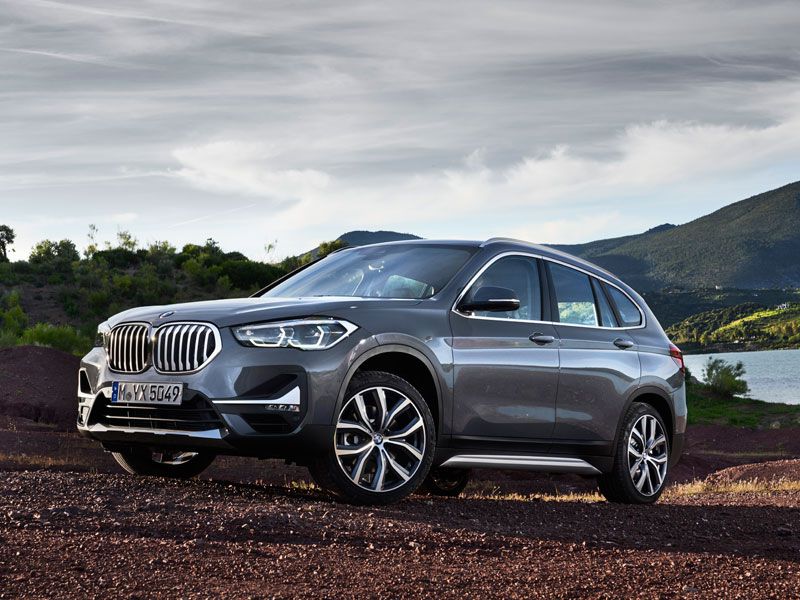
Photo by BMW